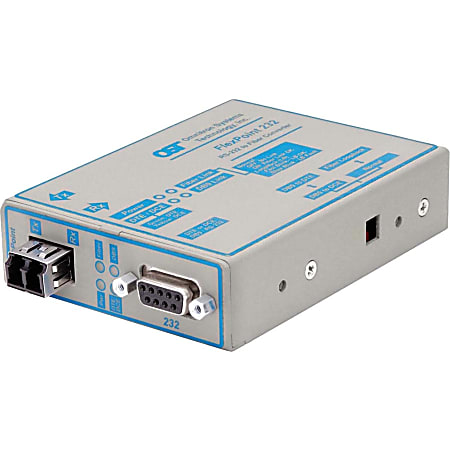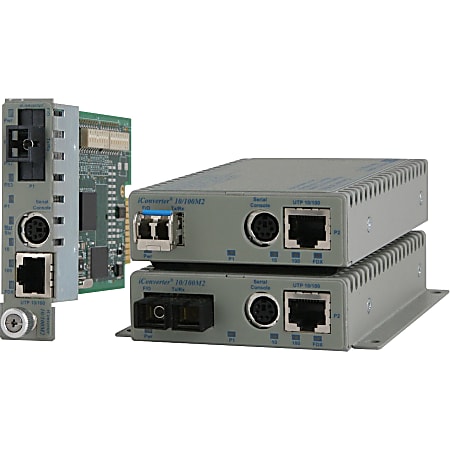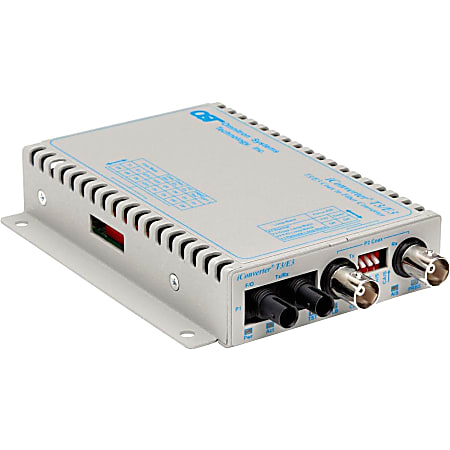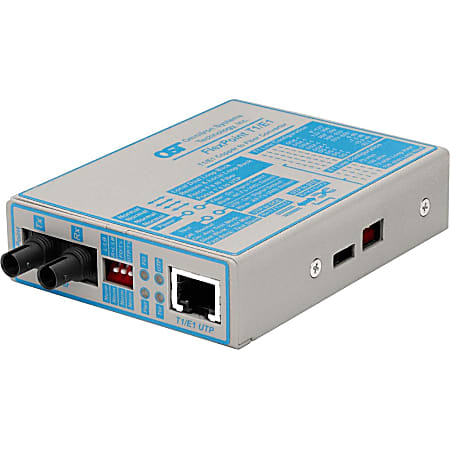Omnitron iConverter 10/100M2 - Fiber media converter - 100Mb LAN - 10Base-T, 100Base-FX, 100Base-TX - RJ-45 / LC single-mode - up to 18.6 miles - 1310 nm
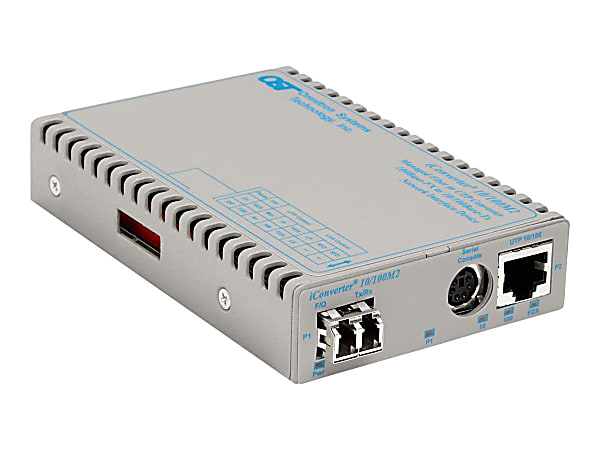
1 / 1
$1246.99/each
Description
The iConverter 10/100M2 Network Interface Device (NID) media converter provides 10Base-T or 100Base-Tx (10/100) to 100Base-Fx Fiber media conversion with integrated management. The 10/100M2 conforms to Ethernet in the First Mile (EFM) fiber standards to support Fiber-to-the-X (FTTX) Metropolitan and Enterprise LAN networks. 10/100M2 media converters are used to provide managed copper demarcation points at the customer premises and network edge, offering Quality of Service and Bandwidth Control (rate-limiting) capabilities. The 10/100M2 utilizes the iConverter Operations, Administration and Maintenance (OAM) management system to remotely monitor network status, configure hardware parameters, generate statistic reports and receive a variety of user-specified traps. The iConverter management system reduces operational expenditures by keeping "truck rolls" to a minimum through remote provisioning and instant trap notification capabilities. The iConverter 10/100M2 supports Port Access, enhanced Bandwidth Control, Port MIB statistics, 2,048 byte frames and Layer 2 Control Protocol (L2CP) Policy Control. The 10/100M2 features multiple, user-selectable link fault detection modes for quick fault detection and isolation. These modes operate independently of the network management and monitor the state of the cabling hardware: Link-Segmentation (LS): The normal (default) mode where the UTP and fiber ports establish their links to other connected devices independently of each other. Link-Propagation (LP): In this mode (also known as "Link-Loss-Carry-Forward"), a link-out from the UTP port is generated only when a link-in to the fiber port is present, and a link-out from the fiber port is generated only when a link-in to the UTP port is present. In LP mode, a cable or link fault is propagated in a "domino" fashion to downstream or upstream connected equipment, enabling rapid fault detection. Asymmetrical Link Propagation (ALP): ALP has two modes of operation: copper-to-fiber and fiber-to-copper. In the 'copper-to-fiber' mode, a fault on the UTP port will propagate across the fiber to attached link partner, but not to the UTP port of the link partner. A fault on the fiber will not propagate at all. In the 'fiber-to-copper' mode, a fault on the UTP port will not propagate through to the attached UTP device. In this mode the "domino" effect is limited. Remote-Fault-Detection (RFD): In RFD+LS mode, each port transmits a link signal only when receiving a link. As a result, link faults (no link received) are looped-back and can be reported to the network core Remote Fault Detection + Link Propagate (RFD+LP): In RFD+LP mode, link faults are propagated from the fiber to the UTP port and also looped-back to the fiber port. This mode provides rapid reporting of any cable faults to the network core. Symmetrical-Fault-Detection (SFD): SFD mode is similar to the RFD mode and provides a loop-back of a fiber link fault. When connecting two SFD configured converters "back-to-back", this mode facilitates fiber or UTP fault notification to both ends of the network.
- With Twisted Pair cable, get the desired data transfer rate up to a required distance
- With 10/100Base-TX technology get up to 100Mbps data transfer rate over optical fiber cable
- Expand your network capacity and fulfill requirement with this 2 transceiver/media converter
Specifications
| Item # | 223128 |
| Manufacturer # | PG9989 |
| Ethernet Technology | Fast Ethernet |
| model | iConverter |
| quantity | 1 |
| brand name | Omnitron |
| manufacturer | OMNITRON SYSTEMS TECHNOLOGY, INC. |
Related Products
More Related Products
$1246.99/each

))
))
